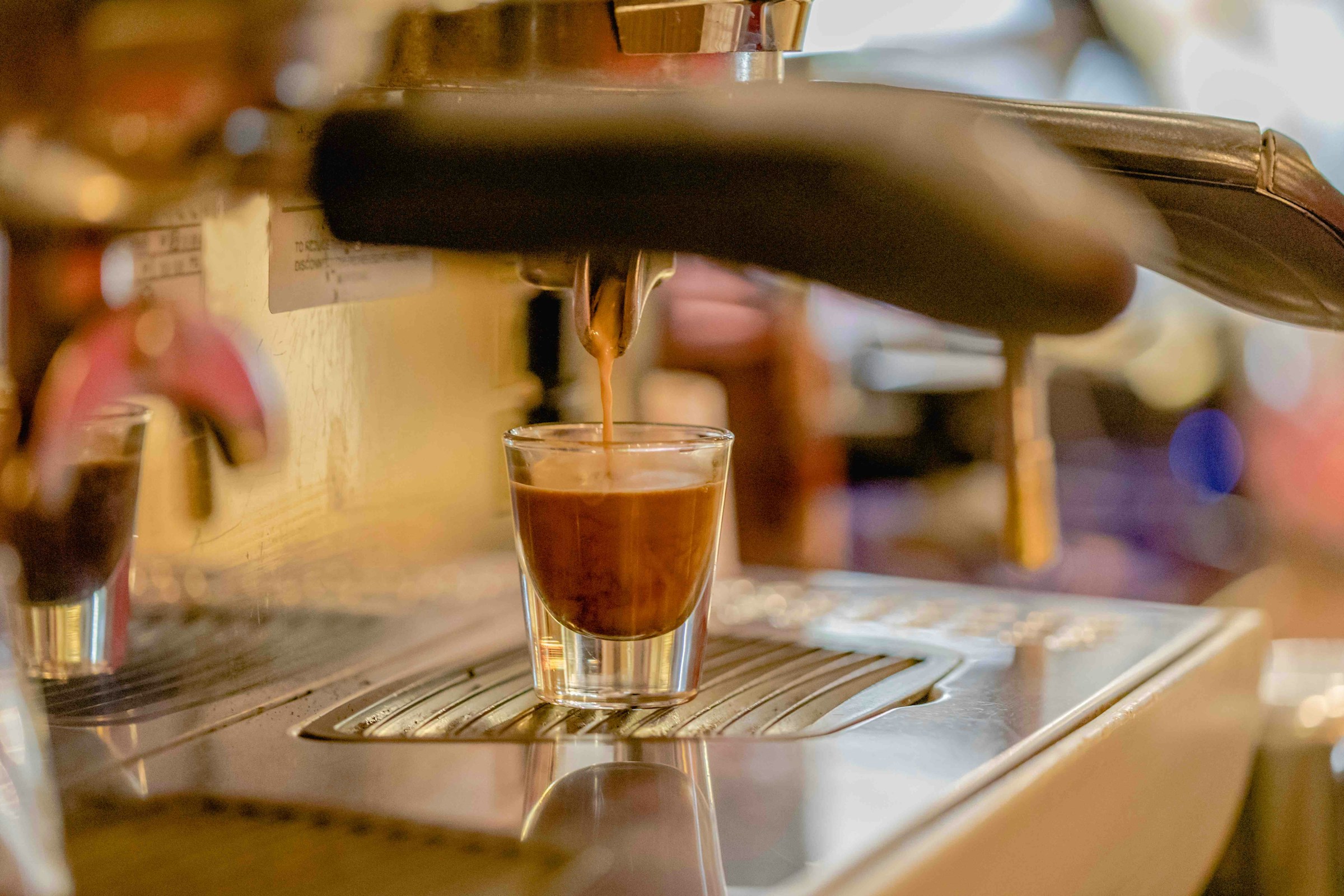Coffee lovers often find themselves at a crossroads when choosing between different espresso drinks.
Lungo and espresso are two popular choices, but what’s the real difference?
Understanding these differences can help you understand which type of coffee is better suited for you.
Whether you prefer the bold intensity of an espresso or the milder, more extended flavor of a lungo, knowing what sets them apart will help you make the best choice.
Let’s look at how these two coffee styles compare in taste, caffeine content, and brewing techniques.
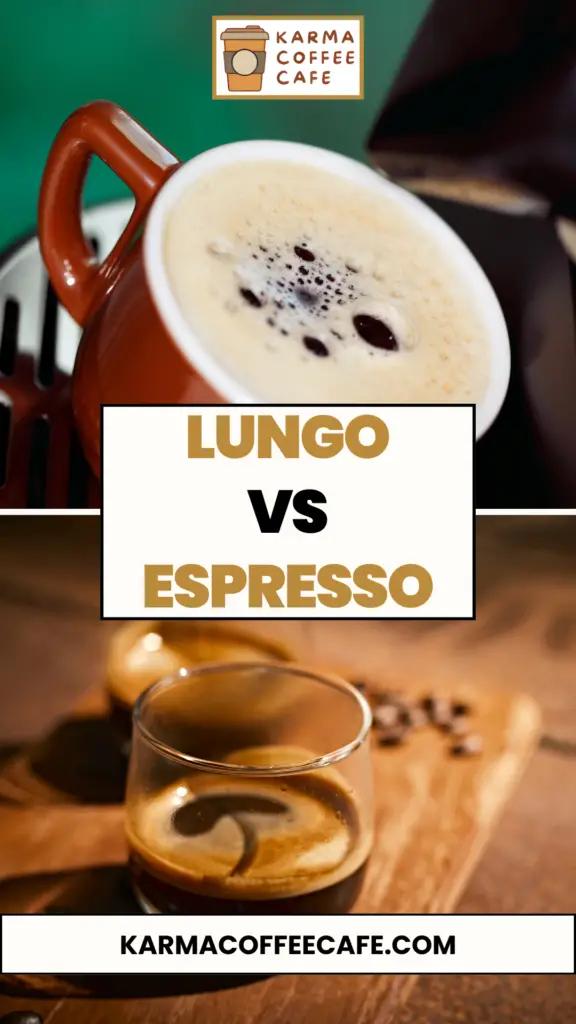
| Feature | Lungo | Espresso |
|---|---|---|
| Brew Ratio | 1:3 to 1:4 | 1:2 |
| Volume | About 60 ml | About 30 ml |
| Extraction Time | Around 1 minute | 25-30 seconds |
| Grind Size | Slightly coarser | Fine |
| Taste Profile | Milder, more bitter | Intense, rich, less bitter |
| Caffeine Content | Slightly higher | Slightly lower |
| Ideal Consumption | Leisurely sipping throughout the day | Quick boost in the morning or after meals |
What is Espresso?
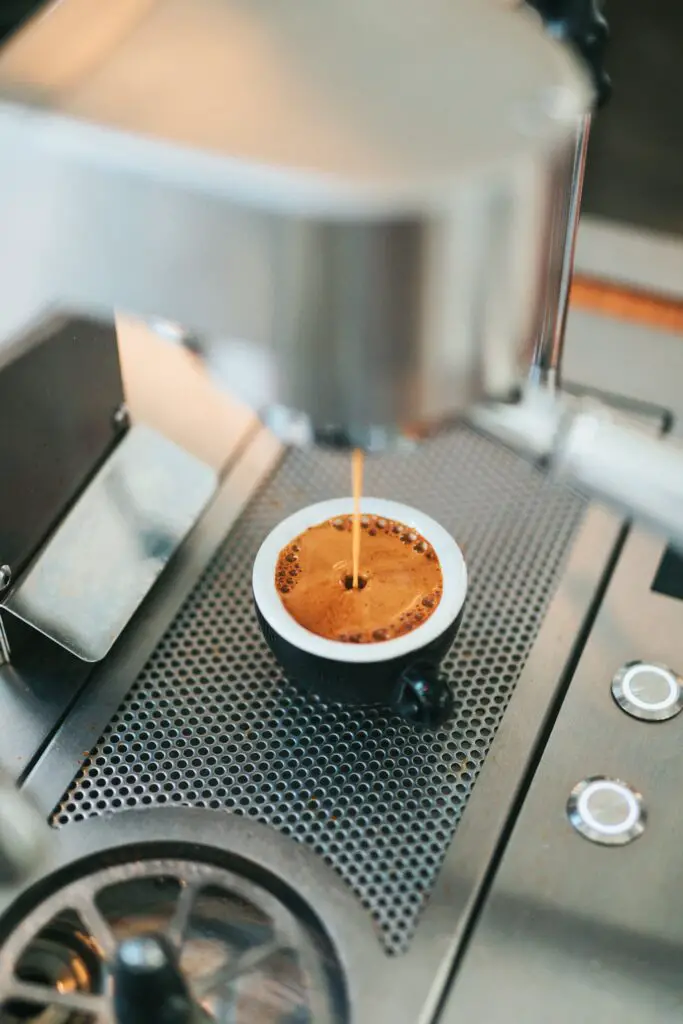
Definition and Origin
Espresso is a rich, concentrated coffee beverage.
It originated in Italy and has become a staple in coffee culture worldwide.
This small, strong drink is known for its intense flavor and thick, frothy crema on top.
How is Espresso Made?
Brewing Method
Espresso is made by forcing hot water through finely-ground coffee beans under high pressure.
This method extracts the coffee’s full flavor and oils, creating a strong, aromatic shot.
Brew Ratio
The brew ratio for an espresso is 1:2. This means using 15 grams of coffee to produce 30 milliliters of espresso.
The precise ratio ensures a balanced extraction, delivering the perfect intensity.
Extraction Time
The extraction time for espresso is short, typically around 25-30 seconds.
This quick process is crucial for capturing the coffee’s bold flavors without over-extracting, which can lead to bitterness.
Taste Profile of Espresso
Espresso has a bold, rich flavor.
It is characterized by its strong, intense taste and creamy texture.
The crema, a layer of foam on top, adds a slight sweetness and velvety mouthfeel.
The overall flavor is robust, with a perfect balance of bitterness and acidity.
Caffeine Content in Espresso
Espresso packs a punch in terms of caffeine.
A single shot contains about 63 milligrams of caffeine, making it a powerful pick-me-up.
Despite its small size, espresso’s concentrated nature provides a quick and effective energy boost.
What is Lungo Coffee?
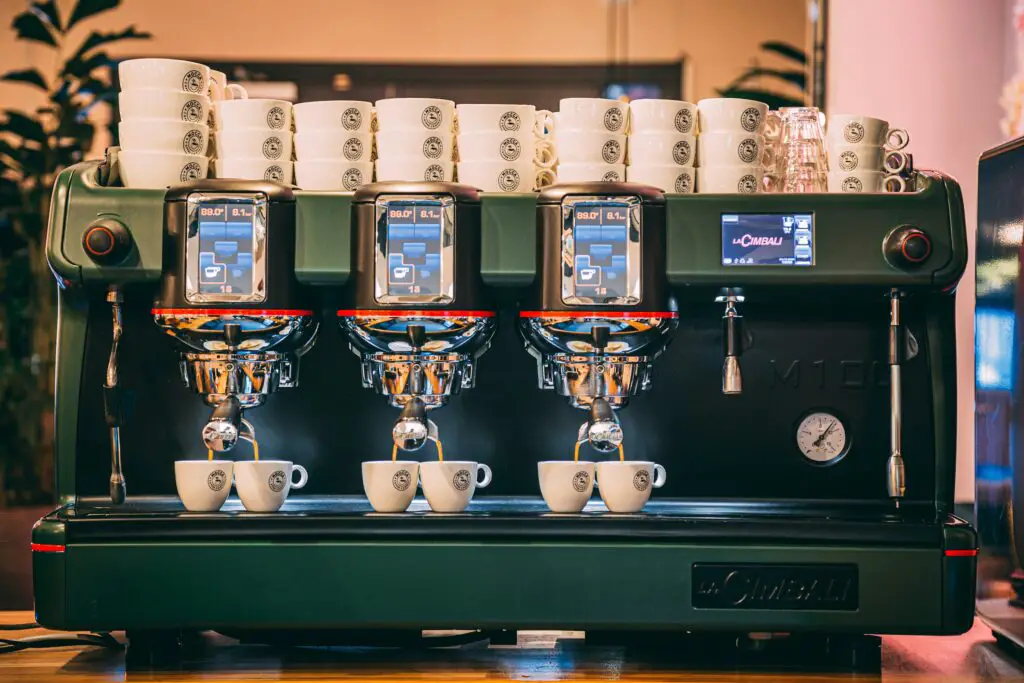
Definition and Origin
Lungo, which means “long” in Italian, is a type of espresso.
It’s made using more water and a longer extraction time, resulting in a larger, milder coffee.
Originating in Italy, lungo has become popular for those who enjoy a less intense coffee experience.
How is Lungo Made?
Brewing Method
Making a lungo involves the same espresso machine used for regular espresso.
However, the key difference is the amount of water used.
Instead of stopping the extraction early, you let it run longer.
Brew Ratio
The brew ratio for a lungo is typically 1:3 or 1:4.
This means using the same amount of coffee grounds as an espresso, but with more water.
For example, you might use 15 grams of coffee and extract 45 to 60 milliliters of water.
Extraction Time
The extraction time for a lungo is around one minute, much longer than the 25-30 seconds needed for an espresso.
This extended time allows for more water to pass through the coffee grounds, resulting in a larger volume of coffee.
Taste Profile of Lungo Coffee
Lungo coffee has a milder and more balanced flavor compared to espresso.
Due to the longer extraction time, it can also have a slightly bitter taste.
The additional water dilutes the coffee, making it less intense but still flavorful.
Caffeine Content in Lungo
Lungo coffee generally contains more caffeine than a single shot of espresso.
The longer extraction time pulls more caffeine from the coffee grounds.
However, because it’s more diluted, it might not taste as strong.
This makes lungo a good choice for those who want a larger coffee with a gentle caffeine boost.
Lungo vs Espresso: Main Differences
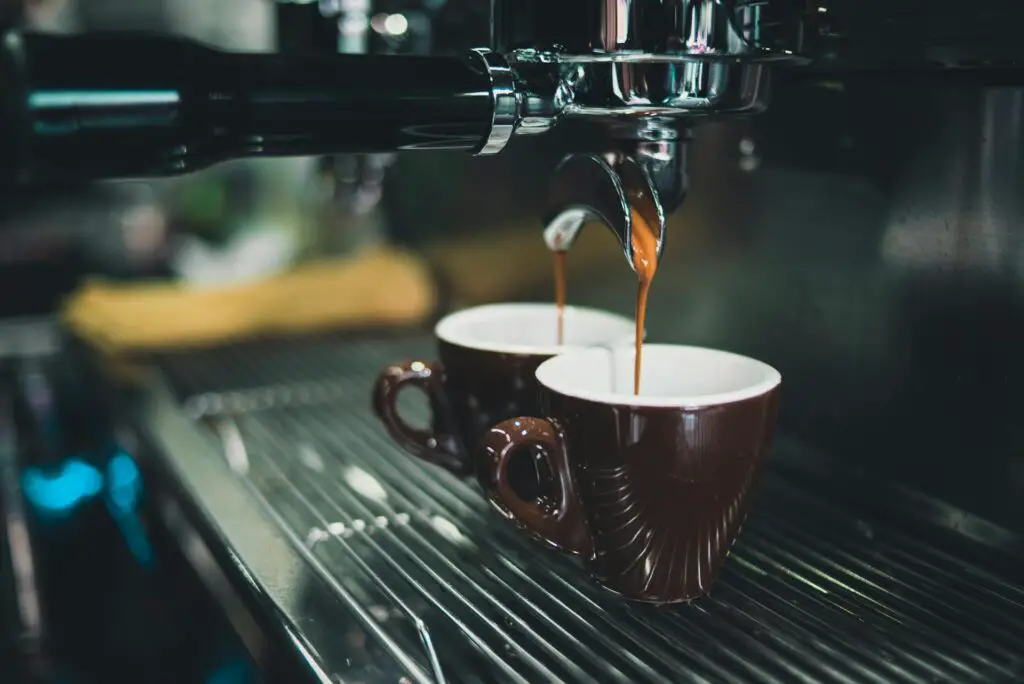
Brewing Techniques
The brewing techniques for lungo and espresso are quite similar, but with key differences.
As mentioned earlier, both are made using an espresso machine, but the amount of water and extraction time vary.
Espresso uses a shorter extraction time of about 25-30 seconds, while lungo takes around one minute.
Espresso requires a brew ratio of 1:2 (15 grams of coffee to 30 milliliters of water), whereas lungo uses a ratio of 1:3 or 1:4, resulting in a larger, less concentrated drink.
Taste Differences
Intensity
Espresso is known for its intense, bold flavor.
The short extraction time captures the strong essence of the coffee, making it rich and robust.
Lungo, on the other hand, has a milder intensity.
The longer extraction and additional water dilute the coffee, leading to a more balanced and less concentrated taste.
Bitterness
Bitterness is another key difference between the two.
Espresso has a balanced bitterness that is strong but not overwhelming.
Lungo, due to its longer extraction time, can have a slightly more bitter taste.
The extended water contact extracts more bitter compounds from the coffee grounds.
Volume and Quantity
Volume and quantity are significant distinctions between espresso and lungo.
A standard espresso shot is about 30 milliliters, making it a small, concentrated drink.
In contrast, a lungo is approximately 60 milliliters, double the size of an espresso.
This larger volume is achieved by using more water during the extraction process.
Caffeine Levels
Caffeine levels differ between espresso and lungo, although the difference is not huge.
Espresso, with its short extraction time, contains a significant amount of caffeine in a small volume.
Lungo, while it uses more water and extracts for a longer time, pulls slightly more caffeine from the coffee grounds.
However, because it is more diluted, the caffeine concentration is lower.
Despite this, a lungo still provides a gentle and extended caffeine boost.
Common Misconceptions About Lungo Coffee
Lungo vs Americano
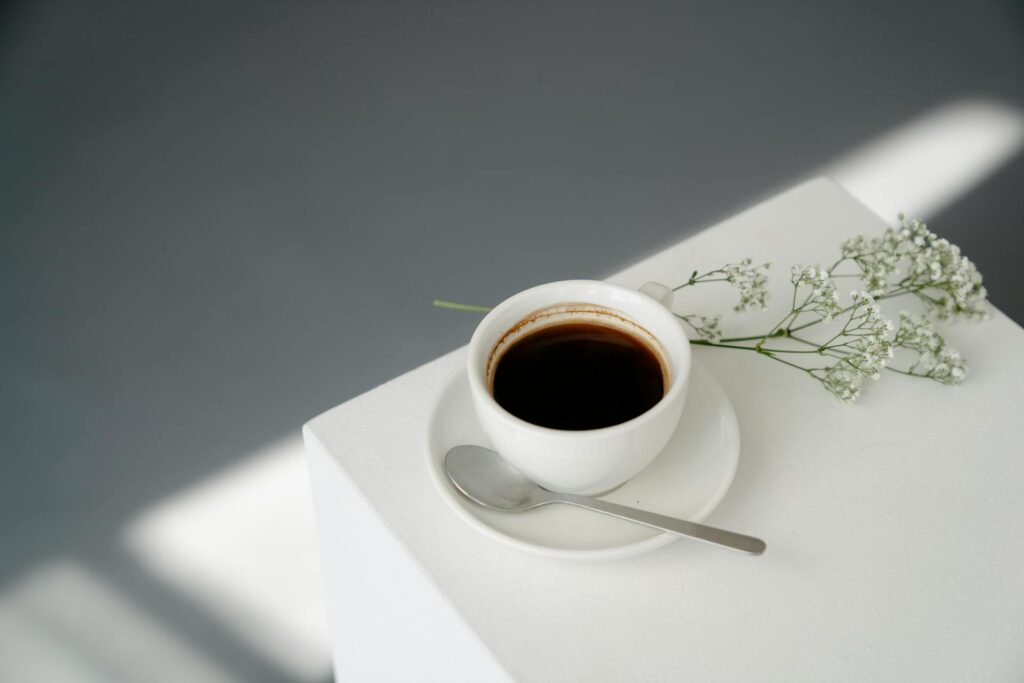
A common misconception is that lungo and Americano are the same.
While both are made using an espresso machine, their preparation differs.
Lungo is made by using more water during the extraction process, resulting in a longer, larger coffee.
In contrast, an Americano is made by adding hot water to a shot of espresso after brewing.
This means that while both are larger and milder than a standard espresso, the Americano has a different flavor profile, often tasting more diluted and less bitter than a lungo.
Lungo vs Long Black
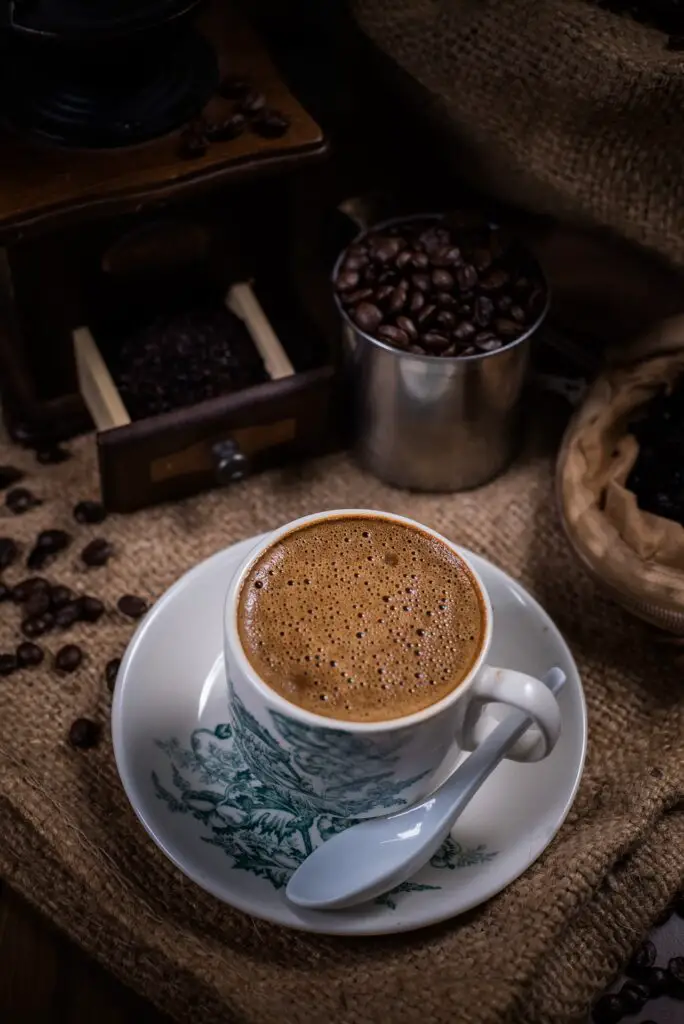
Another frequent mix-up is between lungo and long black.
These two coffee drinks may seem similar, but they are distinct.
A lungo, as mentioned, is an espresso that uses more water during the extraction process.
A long black, however, is made by adding a shot of espresso to hot water.
The key difference is the order in which the water and espresso are combined.
In a long black, the espresso is added last, which preserves the crema and results in a smoother, less bitter drink.
The lungo, with its extended extraction time, tends to have a more pronounced bitterness and a slightly different texture.
Tips for Making the Perfect Lungo
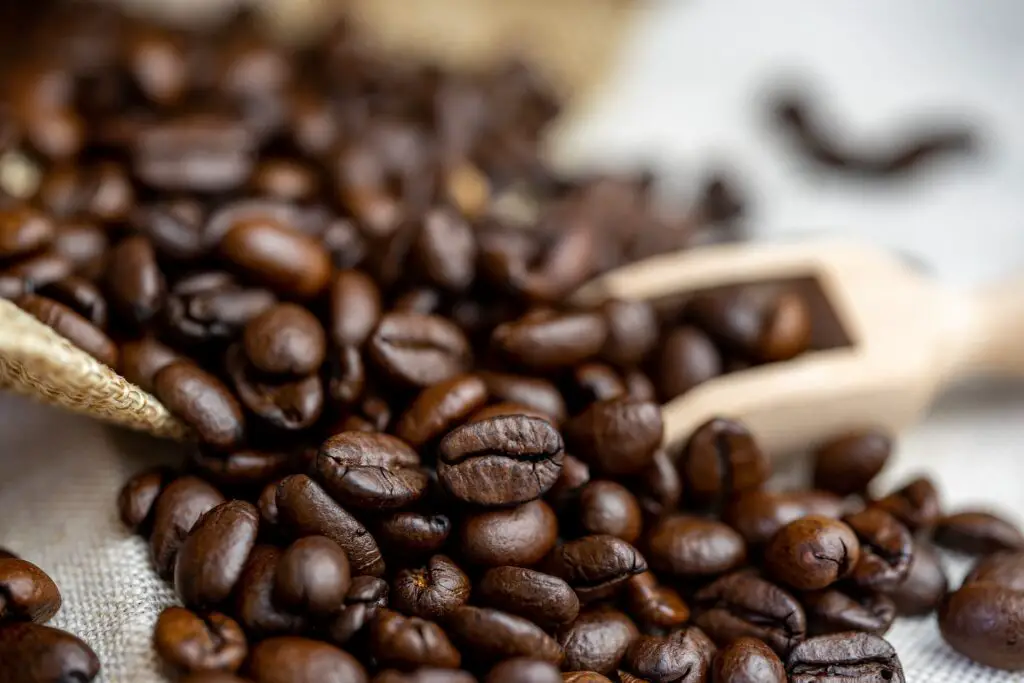
Choosing the Right Beans
The type of coffee beans you choose can greatly affect the taste of your lungo.
Opt for high-quality beans with a rich flavor profile.
Medium to dark roast beans are often preferred for making lungo, as they provide a balanced taste with a slight hint of bitterness.
Experiment with different beans to find the flavor that suits your preference.
Adjusting the Grind Size
Grind size is crucial when preparing a lungo.
For the best results, use a slightly coarser grind than you would for a regular espresso.
This helps to avoid over-extraction and excessive bitterness.
A coarser grind allows the water to flow more evenly through the coffee grounds during the longer extraction time, ensuring a smoother and more balanced flavor.
Mastering the Extraction Time
The extraction time is a key factor in making a perfect lungo.
Unlike espresso, which takes about 25-30 seconds to brew, a lungo requires around one minute.
This extended extraction time allows for more water to pass through the coffee grounds, resulting in a larger volume of coffee.
Monitor the extraction process closely to avoid over-extraction, which can lead to a bitter taste.
Aim for a steady, consistent flow of water to achieve the ideal balance of flavor and strength in your lungo.
Variations and Customizations
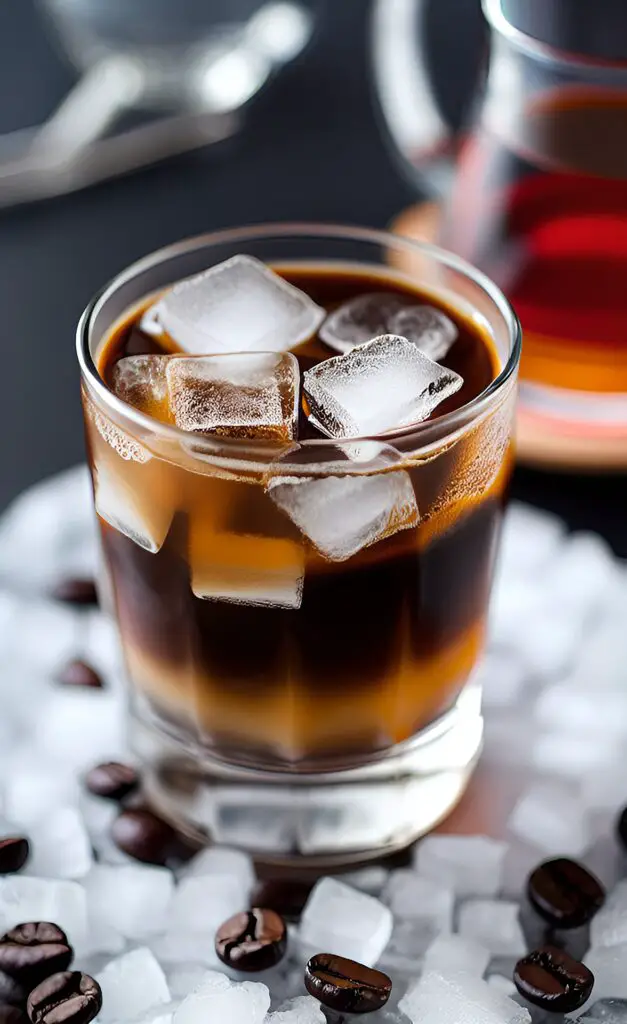
Lungo Con Leche
Lungo con leche is a delightful variation that combines the smoothness of lungo with the creaminess of milk.
To make it, brew a lungo as usual and then add a splash of steamed milk.
This creates a richer, more velvety coffee drink.
The milk helps balance out the slight bitterness of the lungo, resulting in a smoother, more mellow flavor.
You can adjust the amount of milk to suit your taste, making it as creamy or as light as you prefer.
Iced Lungo
For a refreshing twist, try an iced lungo.
Start by brewing a lungo and letting it cool slightly.
Pour the cooled lungo over a glass filled with ice.
This method preserves the coffee’s flavor while adding a cool, invigorating touch.
If you like your iced coffee sweet, consider adding a bit of sugar or flavored syrup before chilling the lungo.
You can also experiment with different types of milk or cream for a richer taste.
An iced lungo is perfect for hot days when you want the bold flavor of coffee in a chilled, refreshing form.
Espresso vs Lungo vs Ristretto: A Quick Comparison

What is a Ristretto?
Definition and Origin
Ristretto is an Italian word meaning “restricted” or “short.”
It refers to a highly concentrated type of espresso.
Ristretto originated in Italy and is known for its intense flavor and smaller volume.
How is Ristretto Made?
Ristretto is made using the same espresso machine but with a shorter extraction time and less water.
Typically, the brew ratio for a ristretto is 1:1, meaning equal parts coffee and water.
This results in a smaller, more concentrated shot of coffee.
The extraction time is about 15 seconds, roughly half the time of a standard espresso.
Taste Profile of Ristretto
Ristretto has a very intense and bold flavor.
It is more concentrated and stronger than both espresso and lungo.
The shorter extraction time captures the essential oils and flavors of the coffee while leaving behind some of the bitter compounds.
This results in a sweeter, more fragrant, and slightly more acidic taste compared to espresso.
Key Differences Between Ristretto, Espresso, and Lungo
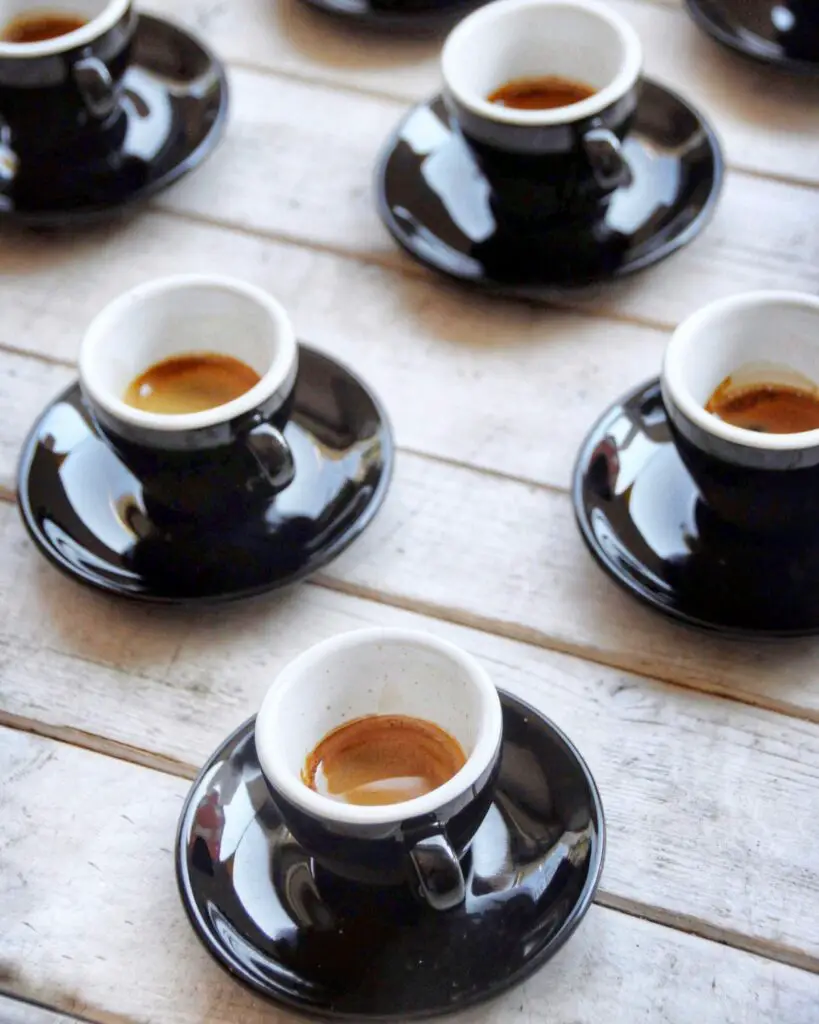
Brewing Techniques
The primary difference in brewing techniques lies in the extraction time and water used.
Ristretto uses the least amount of water and the shortest extraction time, resulting in a very concentrated coffee.
Espresso has a balanced extraction time and water ratio, while lungo uses more water and a longer extraction time, making it less concentrated.
Taste Differences
Ristretto is the most intense and concentrated, with a sweet and slightly acidic profile.
Espresso is rich and balanced, with a bold flavor and a creamy texture.
Lungo, on the other hand, is milder and more diluted, with a more pronounced bitterness due to the longer extraction time.
Volume and Quantity
Ristretto is the smallest in volume, typically around 15 milliliters.
Espresso is about 30 milliliters, making it twice the size of ristretto.
Lungo is the largest, at approximately 60 milliliters, providing a more substantial drink.
Caffeine Levels
While all three types of coffee have similar caffeine content per gram of coffee used, their volumes differ.
Ristretto, being the most concentrated, has a higher caffeine content per milliliter but less overall caffeine due to its smaller size.
Espresso has a moderate amount of caffeine, while lungo, with its larger volume, contains slightly more caffeine overall but is more diluted.
Health Benefits and Considerations

Caffeine Sensitivity
Caffeine sensitivity varies greatly among individuals.
Some people can drink multiple cups of coffee without any issues, while others may feel jittery after just one cup.
Espresso contains less caffeine per ounce than lungo, but because it is more concentrated, it delivers a stronger caffeine kick.
Lungo, with its larger volume, has slightly more caffeine overall due to the longer extraction time, which allows more caffeine to be extracted from the coffee grounds.
If you are sensitive to caffeine, it’s important to monitor your intake and choose the coffee type that best suits your tolerance.
Nutritional Information
Both espresso and lungo are low in calories, making them a good choice for those who are mindful of their calorie intake.
A typical shot of espresso has about 1-2 calories, while a lungo, being larger, has about 2-4 calories.
These figures assume that you are drinking your coffee black, without added sugar or milk.
Espresso and lungo also provide small amounts of essential nutrients like magnesium, potassium, and niacin.
Additionally, coffee is a source of antioxidants, which can help protect your cells from damage and reduce inflammation.
However, it’s important to enjoy these beverages in moderation, as excessive caffeine consumption can lead to negative health effects, such as increased heart rate, anxiety, and digestive issues.
Nespresso Capsules: Espresso and Lungo Options

Comparing Nespresso Capsules
Nespresso offers a wide variety of capsules designed for both espresso and lungo drinks.
These capsules differ primarily in their grind size and intended extraction time.
Espresso capsules are finely ground and intended for a shorter extraction time, resulting in a rich and concentrated coffee.
Lungo capsules, on the other hand, have a slightly coarser grind and are designed for a longer extraction time, yielding a larger and milder coffee.
Espresso capsules typically produce around 40ml of coffee, while lungo capsules yield about 110ml.
This difference in volume is due to the amount of water used during extraction.
Nespresso ensures that each type of capsule is optimized to bring out the best flavors and aromas for its respective brewing method.
Which One Should You Choose?
If you prefer a strong, bold, and concentrated coffee with a rich crema, then espresso capsules are the way to go.
These are perfect for enjoying a quick, intense shot of coffee or as a base for other coffee drinks like lattes or cappuccinos.
If you enjoy a larger cup of coffee with a milder flavor and a bit more bitterness, lungo capsules are ideal.
Lungo provides a more extended coffee experience, perfect for sipping slowly and savoring the nuanced flavors that come from the longer extraction time.
Conclusion: Choosing Your Perfect Coffee
Choosing between espresso and lungo comes down to personal preference.
Some enjoy the intense, bold flavor of espresso.
Others prefer the milder, more extended experience of a lungo.
Experiment with both to find your favorite.
Consider the situation when making your choice.
Need a quick, strong pick-me-up? Go for espresso.
Want a longer, more relaxed coffee experience? Choose a lungo.
Both have unique qualities to enjoy.
Frequently Asked Questions (FAQs)
How to Avoid Over-Extraction?
Over-extraction can make your coffee taste bitter and unpleasant.
To avoid this, use the correct grind size for your coffee type.
For espresso, use a fine grind.
For lungo, use a slightly coarser grind.
Pay attention to the extraction time: 25-30 seconds for espresso and around one minute for lungo.
These adjustments will help you achieve a balanced and flavorful cup.
Can You Add Milk to Lungo?
Yes, you can add milk to lungo.
This variation is known as “lungo con leche.”
Adding milk can soften the bitterness of a lungo and create a creamier texture.
It’s a great option if you prefer a smoother and less intense coffee experience.
What is the Best Time to Enjoy Lungo or Espresso?
The best time to enjoy espresso is usually in the morning or early afternoon when you need a quick, strong boost of energy.
It’s also a perfect pick-me-up after meals.
Lungo, with its milder flavor and larger volume, is ideal for leisurely sipping throughout the day.
Enjoy it during a relaxed morning, a coffee break, or in the late afternoon.


